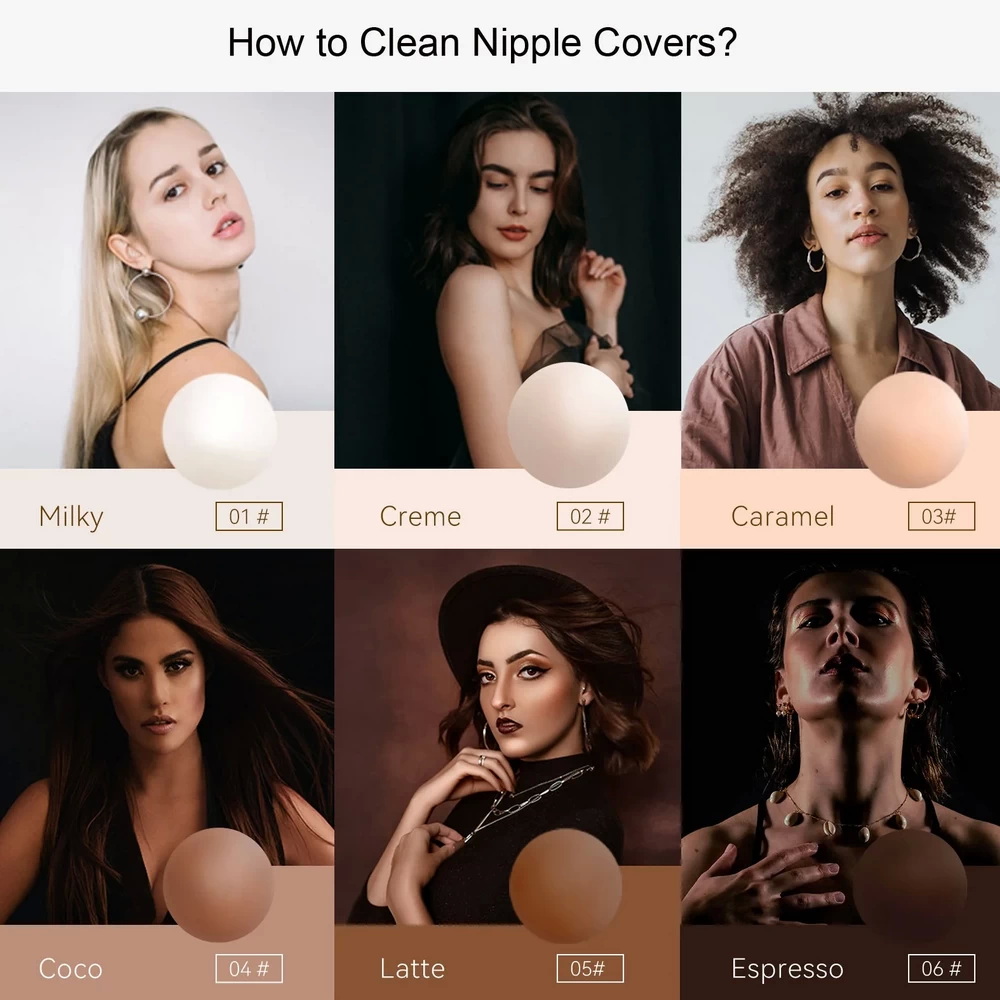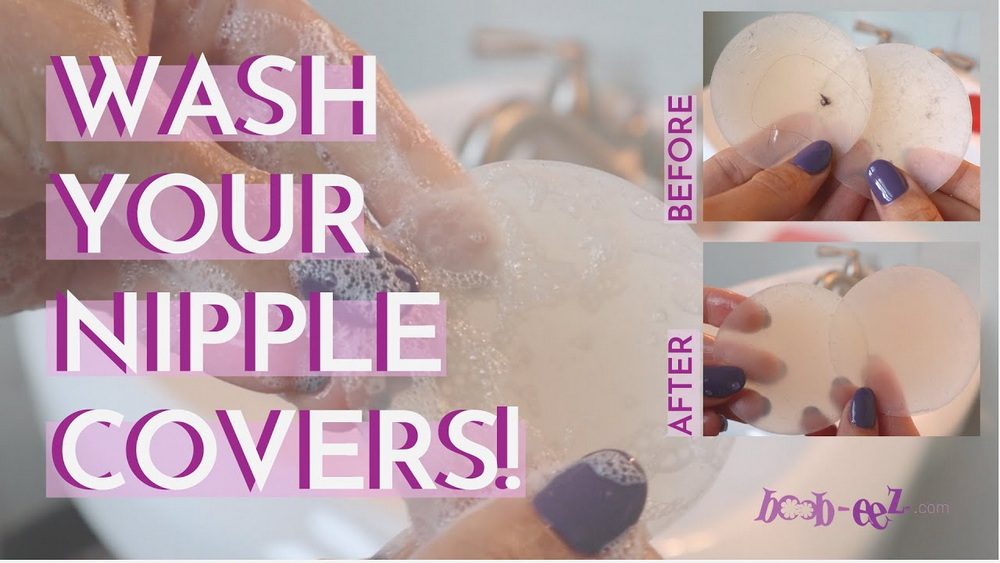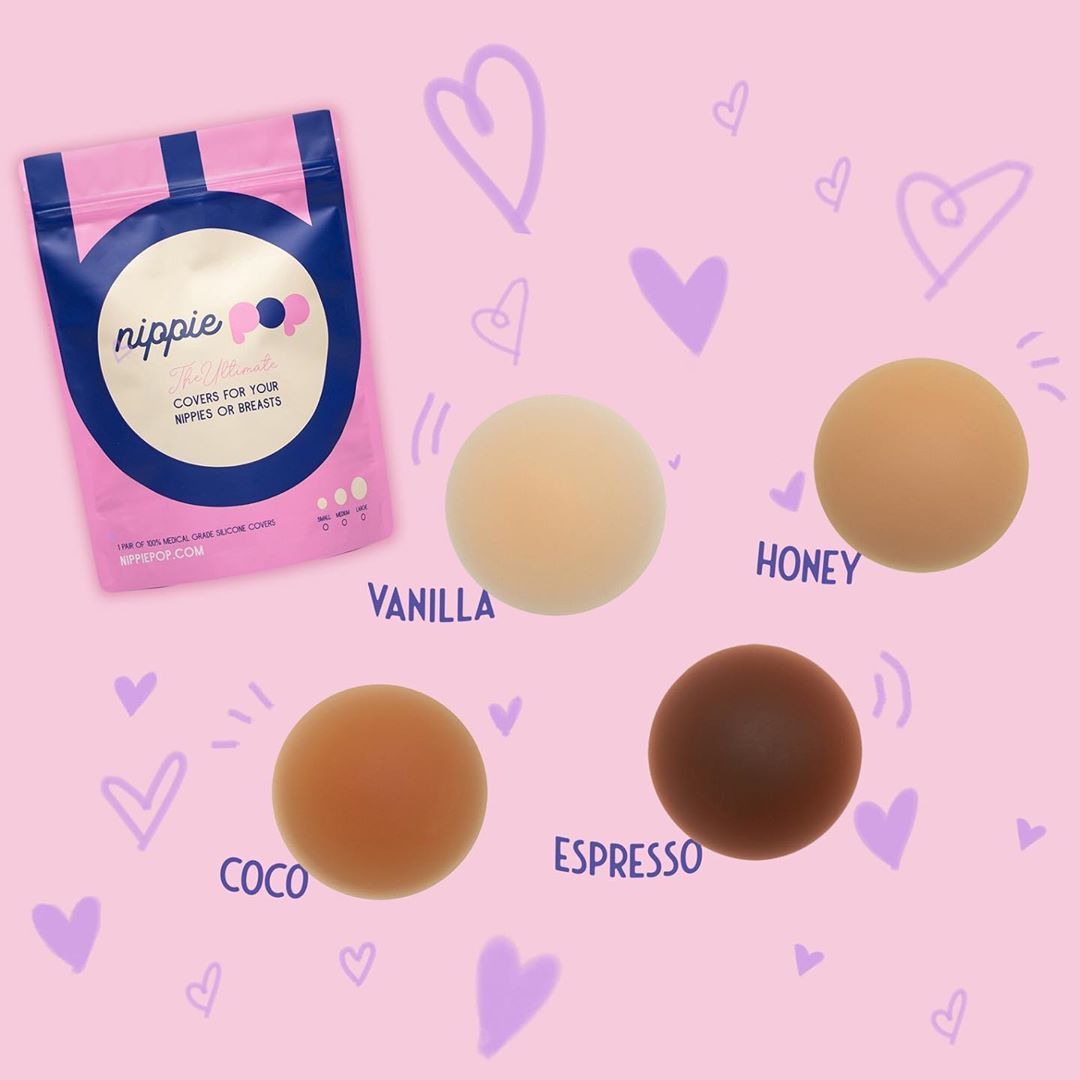Content Menu
● Why Clean Nipple Covers?
● Types of Nipple Covers and Cleaning Needs
>> Silicone Nipple Covers
>> Fabric Nipple Covers
● Materials Needed for Cleaning
● Step-by-Step: How to Clean Nipple Covers
>> Cleaning Silicone Nipple Covers
>> Cleaning Fabric Nipple Covers
● Video Demonstrations
● How Often Should You Clean Nipple Covers?
● Troubleshooting and Tips
● Storage for Longevity
● When to Replace Nipple Covers
● Hygiene and Skin Health
● Nipple Cover Maintenance Tips
● Maintenance FAQ
>> 1. How can I remove adhesive residue from skin?
>> 2. Will acne develop under nipple covers?
>> 3. Can I use any soap to clean nipple covers?
>> 4. How should I store nipple covers for maximum life?
>> 5. What do I do if my nipple covers won't stick anymore?
>> 6. Can nipple covers be used for swimming?
>> 7. How long do nipple covers typically last?
● References
How to Clean Nipple Covers: An Ultimate Guide
Keeping nipple covers clean is essential for maintaining their hygiene, longevity, and adhesive power. This guide covers every detail of how to clean nipple covers, suitable for both silicone and fabric types, and is packed with practical tips, images, and videos to help extend the life of your nipple covers.[1][2]

Why Clean Nipple Covers?
Proper cleaning eliminates sweat, skin cells, and oil that accumulate on adhesive surfaces. Without regular cleaning, nipple covers may lose stickiness or cause skin irritation.[2][1]
- Skin cell residue reduces adhesion, making nipple covers fall off more easily.[2]
- Sweat and natural oils degrade adhesive, causing discomfort and ineffective coverage.[2]
- Dirty nipple covers can cause rashes and infections, which compromise comfort and appearance.[1]

Types of Nipple Covers and Cleaning Needs
There are two main nipple cover types:
- Silicone nipple covers: Flexible, skin-like, and reusable.
- Fabric nipple covers: Made of cotton or polyester, usually disposable but some are reusable.[1]
Silicone Nipple Covers
- Highly durable but require gentle cleaning to keep adhesive sticky.[1]
- Suitable for use with swimwear, backless tops, and sheer outfits.
Fabric Nipple Covers
- Often disposable but reusable versions exist.
- Benefit from gentle washing to maintain shape and adhesive properties.[1]
Materials Needed for Cleaning
1. Lukewarm water (avoid hot water, especially for silicone).[2]
2. Mild or gentle soap (harsh chemicals or detergents damage adhesive).[2][1]
3. Clean fingers (avoid sponges or towels on sticky sides).[2]
4. Protective backing for storage.
Step-by-Step: How to Clean Nipple Covers
Cleaning Silicone Nipple Covers
Step 1: Rinse Covers
Hold nipple covers under lukewarm running water. Gently rub both sides with clean fingers to remove sweat and debris.[2]
Step 2: Apply Mild Soap
Add a few drops of mild soap or gentle face cleanser. Create a lather and softly massage covers to eradicate oil and odor.[1][2]
Step 3: Rinse Soap
Thoroughly rinse with water to remove soap, which can affect adhesive if left behind.[2]
Step 4: Air Dry
Lay covers adhesive side up on a clean, flat surface. Avoid towels or tissues which may leave lint and weaken stickiness.[1][2]
Step 5: Replace Protective Film
Once dry, cover the sticky area with the protective backing before storage. Keep covers in a dust-free box or bag. This ensures longevity and optimal adhesion.[1]
Cleaning Fabric Nipple Covers
Step 1: Remove Covers Gently
Peel covers off skin slowly, minimizing stretching and damage.[1]
Step 2: Wash with Mild Soap
Handwash with lukewarm water and gentle soap, avoiding soaks. Carefully rub to remove residue.[1]
Step 3: Air Dry
Place covers on a flat surface to air dry. Avoid squeezing or twisting.[1]
Step 4: Store in Clean Container
Once dry, store in original packaging or clean pouch to prevent dust build-up.[2][1]

Video Demonstrations
- YouTube: Real user cleaning, rinsing, and drying methods for nipple covers.[4]
How Often Should You Clean Nipple Covers?
- Ideally after each wear if sweat, oil, or residue is present.[2]
- For light wear, consider weekly cleaning to protect adhesive.[2]
- Excessive washing may degrade stickiness—find a balance between hygiene and longevity.[2]
Troubleshooting and Tips
- Avoid sponges, paper towels, and aggressive scrubbing; these remove adhesive.[7][2]
- Harsh soaps damage both silicone and fabric covers—stick to baby wash or mild cleansers.[7]
- Never soak covers in water; short, gentle rinses are best.[1]
- Store covers flat and away from dust, heat, or direct sunlight.[8]
Storage for Longevity
- Replace protective backing after each clean.
- Keep covers in their original box, plastic pouch, or cling film.
- Avoid folding or creasing to maintain adhesive and shape.[8][1]
When to Replace Nipple Covers
- Buy new covers if you notice fraying edges, peeling, discoloration, or loss of stickiness.[1]
- With care, premium covers last up to 40+ wears.[1]
Hygiene and Skin Health
- Always clean skin before applying nipple covers; residue and oils hamper adhesion and can irritate skin.[2][1]
- Sensitive skin users can test covers on an arm area before full use.[2]
- If irritation or breakouts occur, discontinue use and consult a skin specialist.[2]
Nipple Cover Maintenance Tips
- Clean covers right after swimming or strenuous activity.
- Avoid using moisturizers or oils prior to wearing covers.[2]
- Store in dry, clean place to maximize life span.
- Regular inspection ensures optimal hygiene and effectiveness.[1]

Maintenance FAQ
1. How can I remove adhesive residue from skin?
Try a warm shower or use baby oil on a cotton pad to gently rub away excess adhesive.[2]
2. Will acne develop under nipple covers?
For most people, no—but those with sensitive skin may react to adhesives. Test first on another part of your body.[2]
3. Can I use any soap to clean nipple covers?
No, always use mild, gentle soap or baby wash. Strong detergents can ruin stickiness and cause irritation.[1][2]
4. How should I store nipple covers for maximum life?
After drying, return covers to their protective backing, then store in a clean box/pouch away from heat and dust.[8][1]
5. What do I do if my nipple covers won't stick anymore?
Clean them thoroughly following the steps above. If adhesion doesn't recover, it may be time to buy replacements.[1]
6. Can nipple covers be used for swimming?
Many silicone covers are waterproof and can be worn with swimwear, but always clean after use to prevent bacteria and odor.[2][1]
7. How long do nipple covers typically last?
With good care, silicone nipple covers can last 40+ wears; fabric versions may be shorter.[1]
References
[1](https://nuebootape.com/blogs/nueboo-blog/clean-wash-nipple-covers)
[2](https://niidor.com/blogs/how-to/how-to-clean-nipple-covers-a-comprehensive-guide)
[3](https://www.tiktok.com/@thejulianaamoateng/video/7398911309909069062?lang=en)
[4](https://www.youtube.com/watch?v=O_e0kKxHlnc)
[5](https://www.instagram.com/reel/C3qm7amgfnm/?hl=en)
[6](https://www.tiktok.com/@ecora_official/video/7454103070767648007)
[7](https://mynudeshade.com/blogs/news/how-to-clean-reusable-nipple-covers-before-and-after-wearing)
[8](https://www.kieskin.co/blogs/blog/guide-to-caring-for-your-kie-skin-nipple-covers)
[9](https://cakesbody.com/pages/faq)
[10](https://www.reddit.com/r/HerOneBag/comments/1i09jd8/how_to_prevent_smell_when_using_nipple_covers/)
[11](https://undercover-glamour.com/howtowearnipplecovers)
[12](https://niidor.com/blogs/article/how-to-clean-and-care-for-niidor-s-nipple-covers-and-sticky-bras)
[13](https://www.getboomba.com/blogs/boomba-blog/ultimate-guide-to-nipple-covers-how-to-choose-wear-and-maintain)
[14](https://www.reddit.com/r/breastfeeding/comments/17jhzz5/cleaning_nipple_shields/)
[15](https://nipppi.net/blogs/blogs/nipple-covers-application-maintenance)
[16](https://www.instagram.com/reel/Cw7VUj6BeiE/?hl=en)
[17](https://apricotton.co/pages/nipple-cover-care-instructions)
[18](https://www.youtube.com/shorts/_zmTomUrTeA)
[19](https://gomommyus.com/blogs/news/happy-nipples)



































































